Utah is home to more than 240 species of trees, many of which are native to the area. The geography of Utah includes high mountain peaks, expansive deserts, and sweeping valleys, all providing a diverse range of climates and growing conditions for these native tree species.
From the hot and dry climate in the western part of the state to the colder temperatures found at higher elevations throughout much of northern Utah, abundant vegetation also thrives across this region. This variety helps create a stunning landscape that supports both evergreen conifers and deciduous hardwood trees.
Below are some beautiful trees native to the state of Utah.

1. Peachleaf Willow
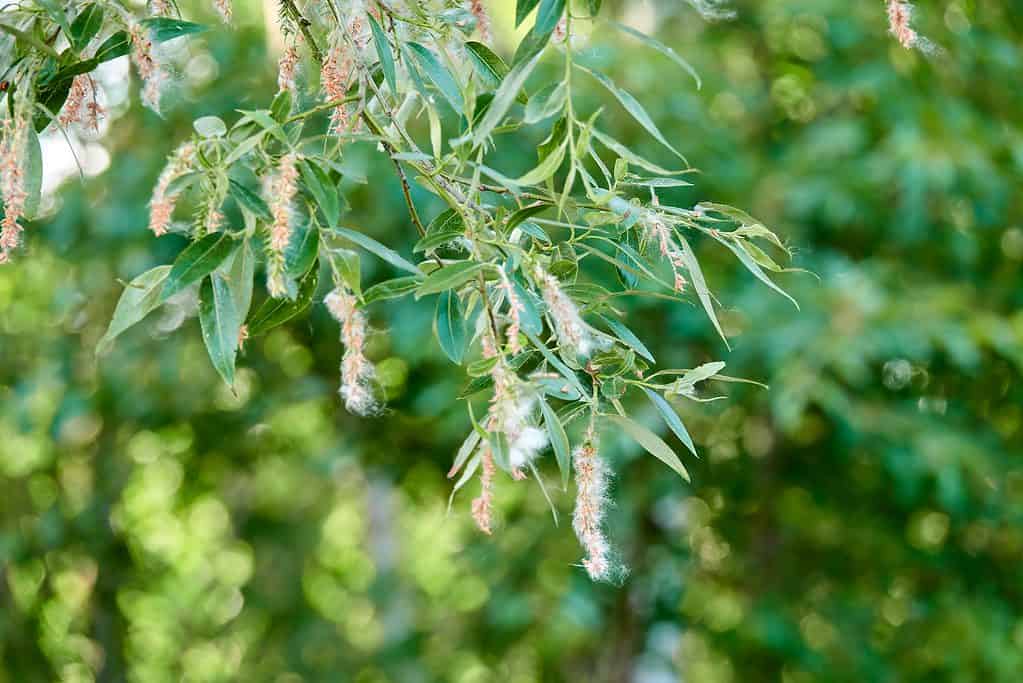
The peachleaf willow provides many benefits to wildlife in the area.
©BestPhotoStudio/Shutterstock.com
The peachleaf willow (Salix amygdaloides) is a small to medium deciduous tree, typically growing 13–66 feet tall. Its leaves are yellowish-green and pale, while its flowers consist of bright yellow catkins in the spring. In late spring, the fruits mature into reddish-yellow capsules with edible seeds inside. This tree prefers northern prairies and often grows near streams alongside cottonwoods.
The peachleaf willow provides many benefits to wildlife in the area. It serves as a source of food for birds and mammals, which feed on its fruits as well as insects that inhabit it during the summer months. The shade provided by this tree also offers shelter for various species, such as deer, rabbits, squirrels, chipmunks, and birds.
2. Gambel Oak
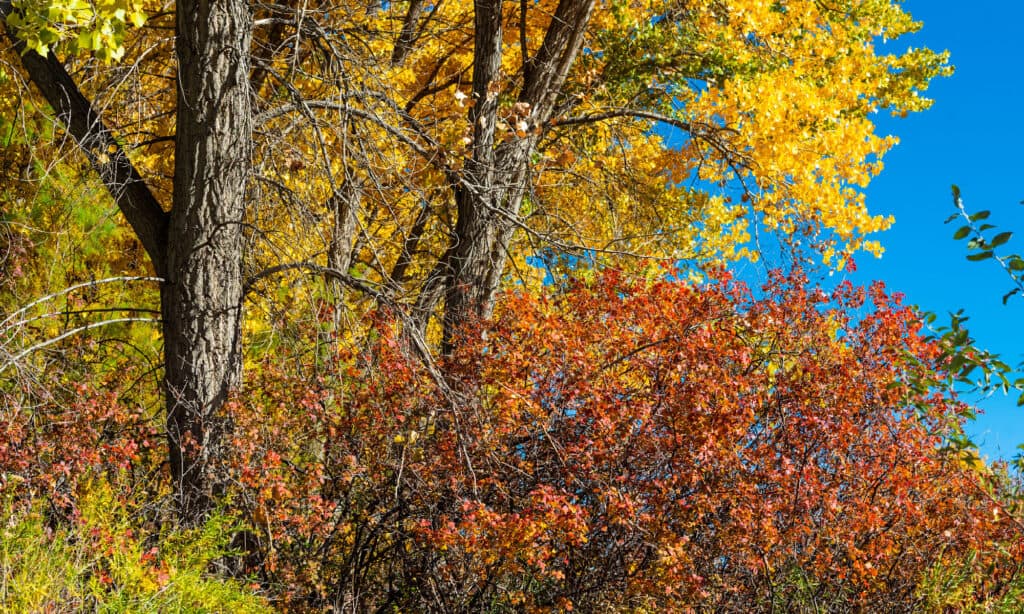
Gambel oak typically spreads quickly due to underground roots, forming thickets or groves of trees.
©iStock.com/bluerabbit
Gambel oak (Quercus gambelii) is an incredibly useful and versatile species of tree that can grow in many environments, from desert scrubland to dense forests. The species has a unique appearance with its brownish-gray bark and short stature typically of 10-30 feet tall, which makes it stand out among other trees native to Utah. This species typically spreads quickly due to underground roots, forming thickets or groves of trees that can cover entire mountainsides.
Gambel oak also provides an important food source for local wildlife, such as deer, squirrels, wild turkeys, black bears, and the Colorado hairstreak! The acorns produced by this species are especially prized by animals as they taste sweet and make a great snack. With all these benefits combined, it’s no wonder why this species is so popular among Utah natives!
3. Douglas Fir
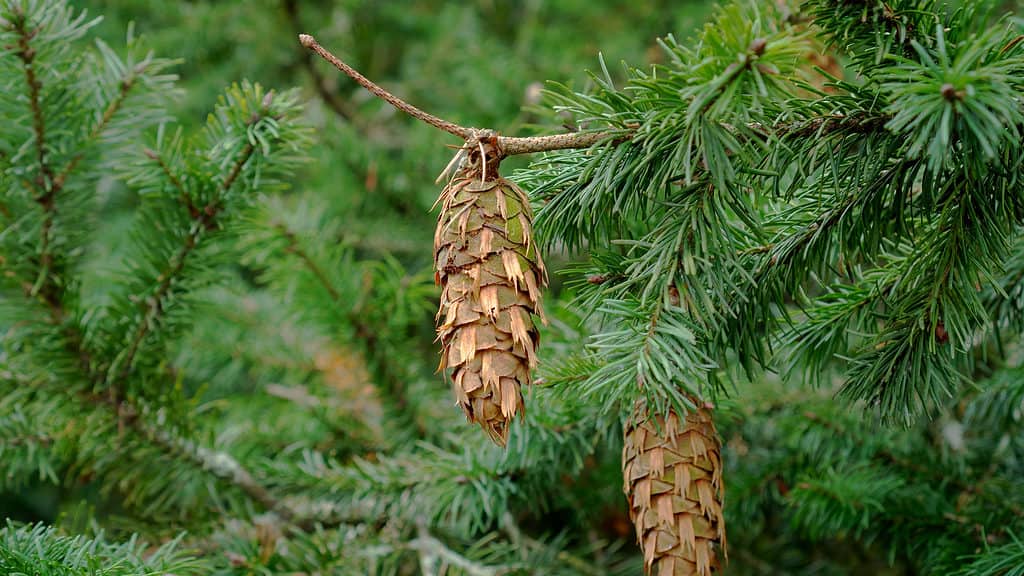
Older Douglas fir trees are home to red tree voles and spotted owls.
©iStock.com/PAVEL IARUNICHEV
Douglas fir (Pseudotsuga menziesii var. glauca) is an evergreen conifer native to Utah that frequently grows up to 150 feet tall and can live for 500–1,200 years! When the tree is young, its bark is thin, gray, and smooth, but as it matures, it thickens and grows deep furrows. The seed cones of this tree are greenish-purple in their infancy before transitioning to a vibrant orange-brown when mature. This type of tree loves middle-elevation forests, particularly on slopes, where elk love to congregate beneath its canopy in the autumn months.
Douglas fir trees provide sustenance for many animals, including elk, deer, and moose. While chipmunks, mice, voles, and shrews savor their seeds as a snack. Not only do these larger mammals find shelter from some of nature’s harsher elements under Douglas fir’s boughs, but the hollow logs are home to American martens. Many birds flock to these trees due to their ample canopy, including songbirds such as chickadee, crossbill, and siskin that enjoy nesting among Douglas fir foliage or feasting upon insects.
4. Chokecherry

Chokecherry trees can be found in open woods, along roadsides, and even in residential areas.
©iStock.com/rparys
Chokecherry trees (Prunus virginiana) are native to many parts of Utah and can be found in open woods, along roadsides, and even in residential areas. They are suckering shrubs or small trees that reach heights of 3 to 20 feet tall with beautiful serrated oval leaves and flowers that bloom in the spring. The drupe fruits on these trees are dark red, almost black, with a sour taste, and contain a stone pit inside.
These trees are home to dozens of types of caterpillars and moths, such as tent caterpillars, black-waved flannel moths, and cecropia moths, among others. Not only do insects benefit from the chokecherry tree, but so do mammals such as moose, elk, mountain sheep, deer, and rabbits, who enjoy eating its berries, foliage, twigs, leaves, and buds.
5. Quaking Aspen
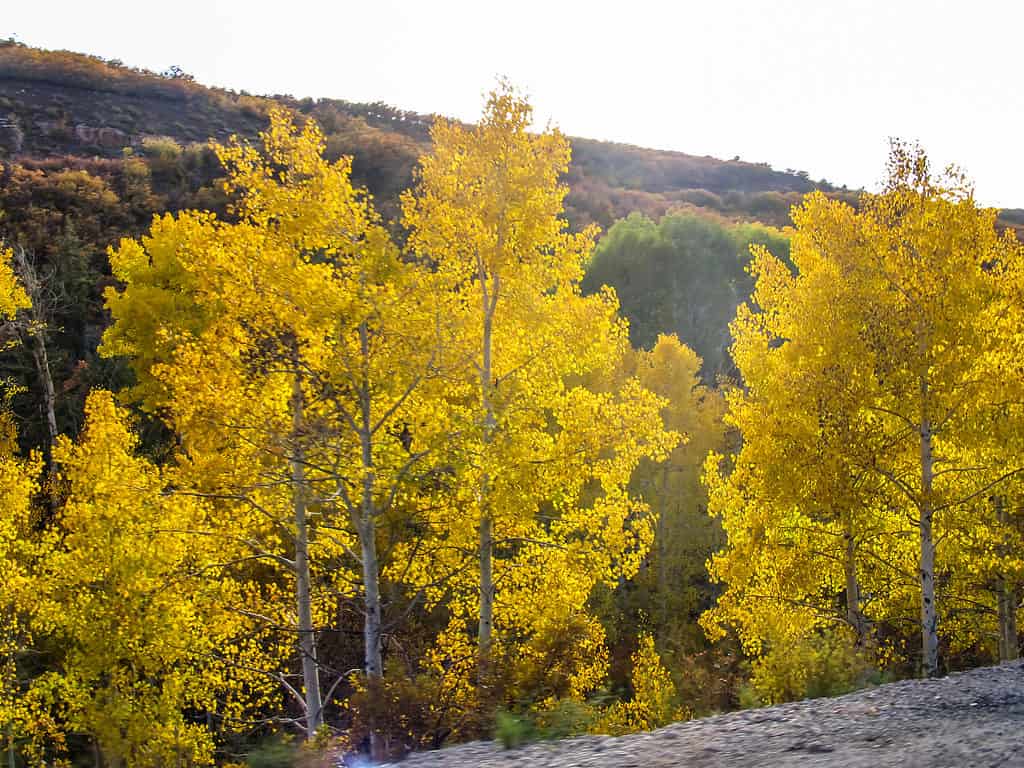
Quaking aspens provide an important food source for many animals within Utah’s wilderness.
©iStock.com/Marieke Peche
Quaking aspens (Populus tremuloides) have been the state tree of Utah since 2014 and a beloved symbol of the state. The trees grow 40-50 feet tall and have smooth pale bark that is scarred black and glossy green leaves that turn bright golden yellow in the fall. These gorgeous trees are unique for their shared root system, which allows them to spread easily and form large groves.
Aspens provide an important food source for many animals within Utah’s wilderness, from small snowshoe hares to elk, who eat their foliage. Even herbivorous mammals such as sheep and goats enjoy browsing on their shoots, while birds (including grouse and quail) and caterpillars feed off their buds and leaves. Beavers also love aspen logs, as they use them to build dams along rivers or streams.
6. Frémont’s Cottonwood
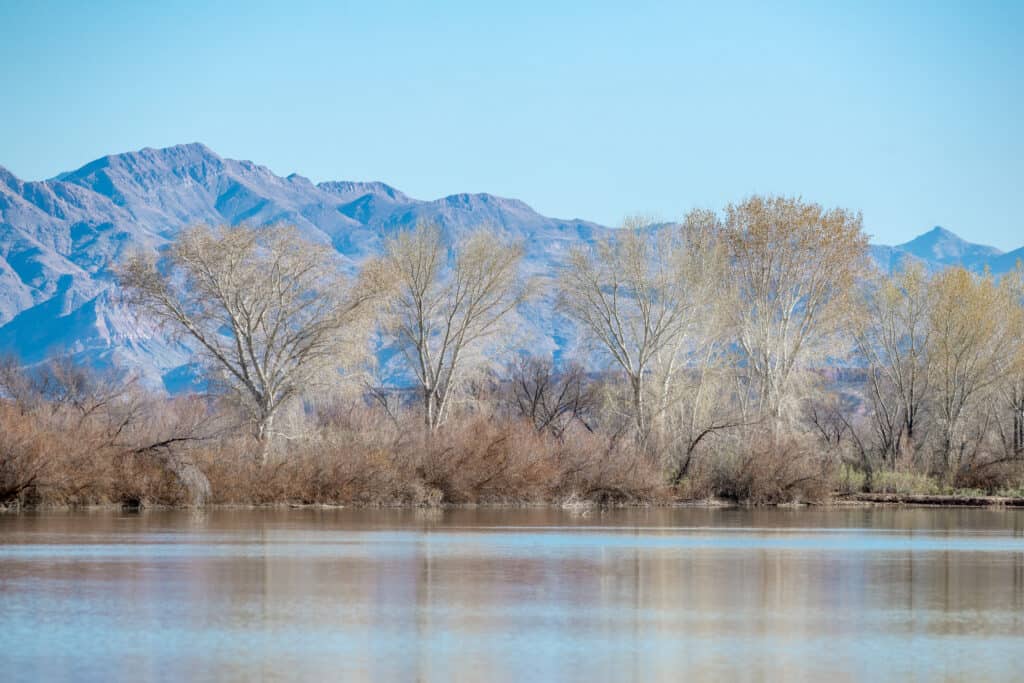
Frémont’s cottonwood provides a habitat for many birds, such as owls and hawks.
©Dominic Gentilcore PhD/Shutterstock.com
Frémont’s cottonwood (Populus fremontii) is a large deciduous tree native to Utah. It belongs to the poplar family and can grow up to 40–115 feet in height. Its leaves are heart-shaped and turn bright yellow and orange in the fall.
Additionally, Frémont’s cottonwood provides a habitat for many birds, such as owls and hawks. It also provides seeds or buds for various mammals, including deer, elk, and beavers. This species also serves important environmental roles such as helping control flooding due to its deep roots that help absorb water during heavy rains or floods, preventing soil erosion near riversides.
7. Ponderosa Pine
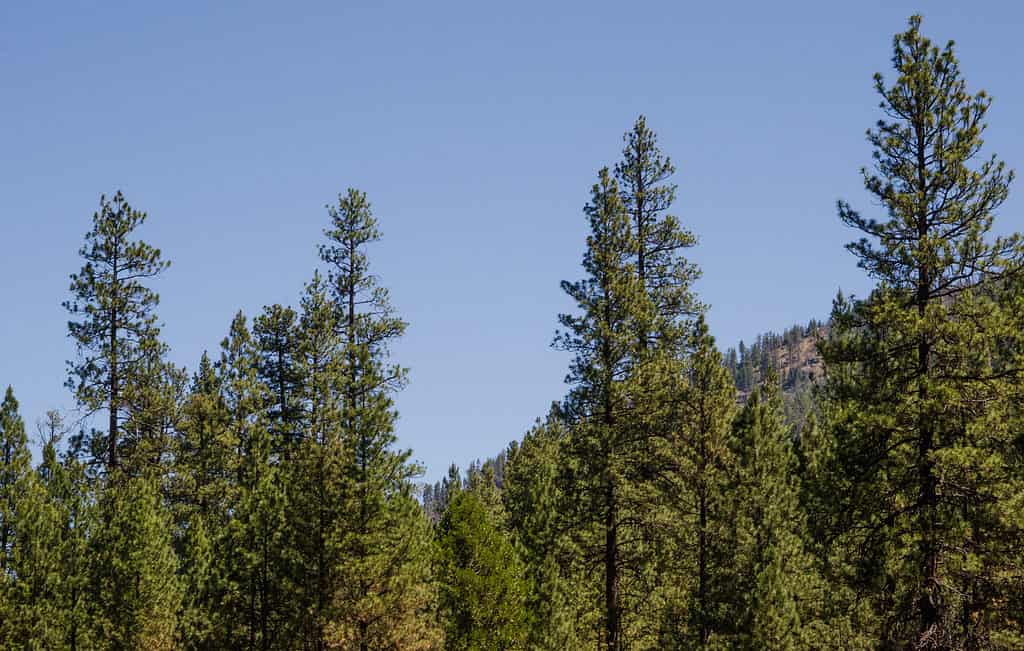
The ponderosa pine is native to Utah, and it serves various purposes.
©iStock.com/Rex_Wholster
Ponderosa pine is also known as western yellow pine or bull pine (Pinus ponderosa var. scopulorum). Ponderosa pines grow 60–100 feet tall, have an iconic shape with dark green needles that are about 5-10 inches long, and egg-shaped cones can be found in great numbers on the trees. These amazing trees have adapted to fire-affected areas with thick bark and buds that are protected by dense needles.
The ponderosa pine is native to Utah, and it serves a variety of purposes. Not only is it a significant source of food for wildlife, but its shape is prized in parks and gardens. The gelechiid moth (Chionodes retiniella) relies on the tree’s needles as its sole food source in the caterpillar stage. Additionally, the seeds are considered a delicacy among squirrels, chipmunks, quail, grouse, and Clark’s nutcracker birds. Even mule deer enjoy snacking on seedlings from this unique pine tree species.
8. Bristlecone Pine
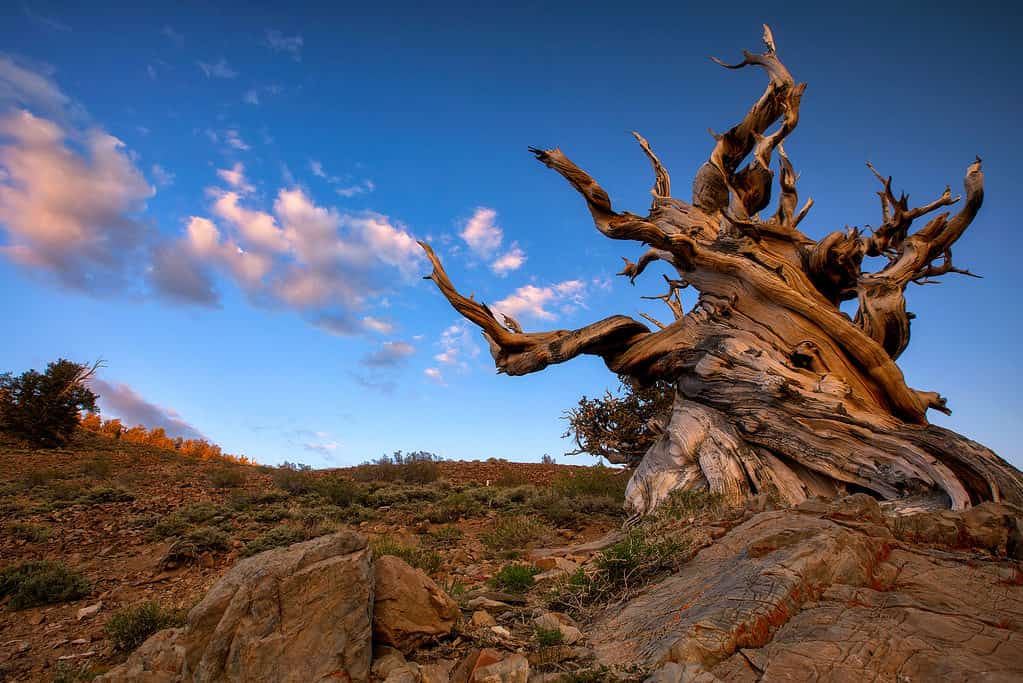
The bristlecone pine is one of the oldest living trees and can grow to be nearly 5,000 years old.
©Bill45/Shutterstock.com
The bristlecone pine (Pinus longaeva) is a species of pine native to the higher-elevation areas of Utah. It is one of the oldest living trees and can grow to be nearly 5,000 years old. In dry zones at high elevation, it can grow up to 30 feet tall, while in low-elevation areas with more water it can reach 60 feet. Its bark is reddish-brown and forms large plates around the trunk that helps protect it from harsh weather conditions. The needles are short, blue-green in color, and grow in clusters of five per fascicle. The cones are small, oval-shaped with prickly scales that give it its name. This tree reaches its full potential about 500 years after germination, so you must be patient in cultivating this species.
9. Blue Spruce
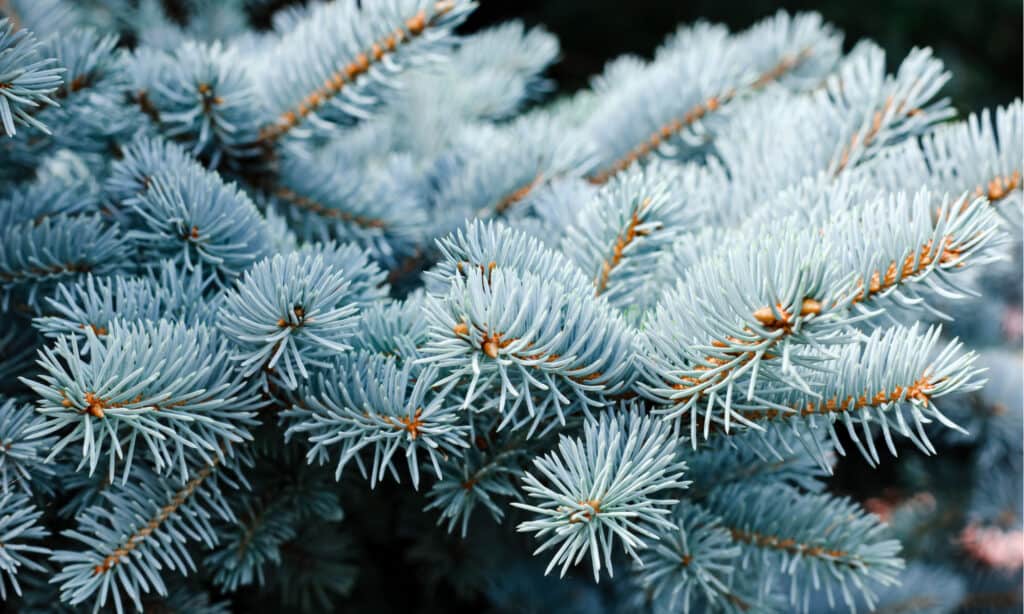
Blue spruce prefers moist and cool climate zones but can adapt to drier conditions.
©Tanya49/Shutterstock.com
Blue spruce (Picea pungens) is a popular coniferous tree that grows in the western United States. Native to Utah, this evergreen tree is easily recognizable by its distinctive blue-green needles and pyramidal shape. The blue spruce can grow up to 75 feet tall and has a slow growth rate. This habit makes it an excellent choice for landscaping projects, as it does not require frequent pruning or maintenance.
Blue spruce prefers moist and cool climate zones but can adapt to drier conditions. It can withstand winter temperatures as low as -40 °F. It has shallow roots when young, so protect the root ball from freezing during the first few years.
10. White Fir
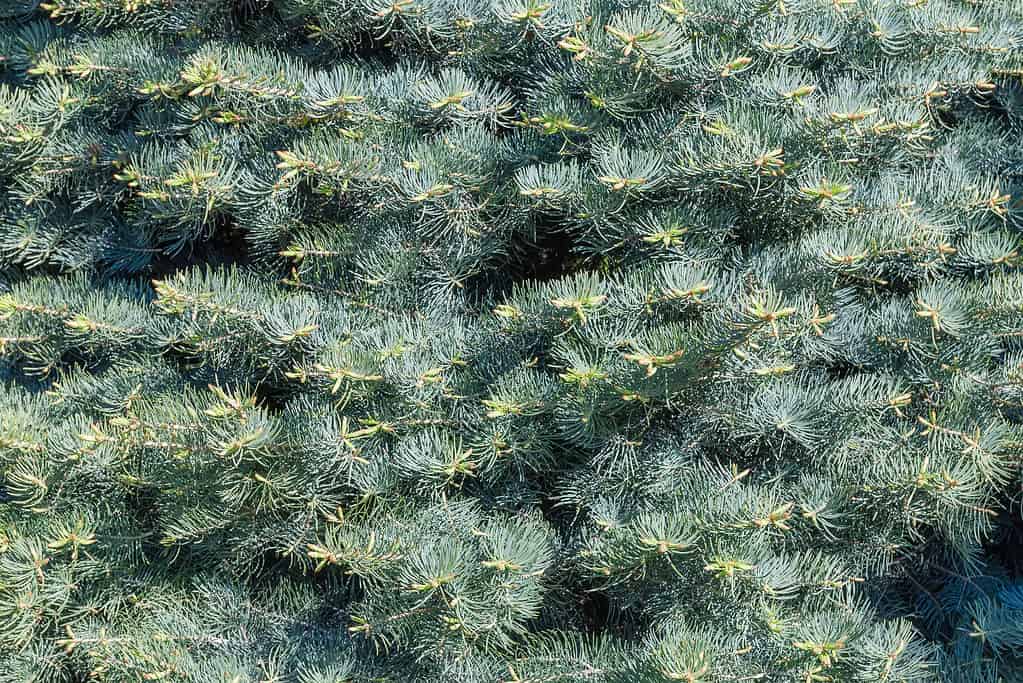
The lower limbs of white firs are good hiding spots for spotted owls, and the branches are hosts to fir mistletoe.
©iStock.com/anmbph
White fir (Abies concolor) is a large evergreen conifer that can be found growing in the mountains and forests of Utah. It typically grows to heights between 80–190 feet tall, with some trees known to reach up to 250 feet. Its thick bark is grayish-brown in color with furrowed ridges that give it an interesting textured look. The cones are green or purple and ripen to pale brown.
The lower limbs of white firs are good hiding spots for spotted owls, and the branches are hosts to fir mistletoe. Sooty grouse and Pacific fishers use large-diameter trees for nesting and denning. You can find many squirrels and chipmunks living in white fir forests, along with browsing deer and porcupines passing through.
Summary of 10 Beautiful Trees Native to Utah
Here’s a recap of the 10 fascinating trees we looked at that are native to Utah.
| Number | Tree | Scientific Name | Height |
|---|---|---|---|
| 1 | Peachleaf Willow | Salix amygdaloides | 13-66 feet |
| 2 | Gambel Oak | Quercus gambelii | 10-30 feet |
| 3 | Douglas Fir | Pseudotsuga menziesii var. glauca | Up to 150 feet |
| 4 | Chokecherry | Prunus virginiana | 3-20 feet |
| 5 | Quaking Aspen | Populus tremuloides | 40-50 feet |
| 6 | Frémont’s Cottonwood | Populus fremontii | 40-115 feet |
| 7 | Ponderosa Pine | Pinus ponderosa var. scopulorum | 60–100 feet |
| 8 | Bristlecone Pine | Pinus longaeva | Up to 30 feet in dry, high-elevation zones; up to 60 feet in moist, low-elevation areas |
| 9 | Blue Spruce | Picea pungens | Up to 75 feet |
| 10 | White Fir | Abies concolor | 80-190 feet; some are up to 250 feet |
The photo featured at the top of this post is © iStock.com/Elenakirey
Sources
- , Available here: https://www.slc.gov/parks/urban-forestry/urban-forestry-utah-native-trees/
- Utah State University Forestry Extension, Available here: https://forestry.usu.edu/tree-identification/index
- History To Go, Available here: https://historytogo.utah.gov/physical-geography-utah/#:~:text=Utah%20has%20three%20climatic%20regions,%2Dhumid%20to%20semi%2Darid.
- Utah DNR - FFSL, Available here: https://ffsl.utah.gov/
Thank you for reading! Have some feedback for us? Contact the AZ Animals editorial team.







